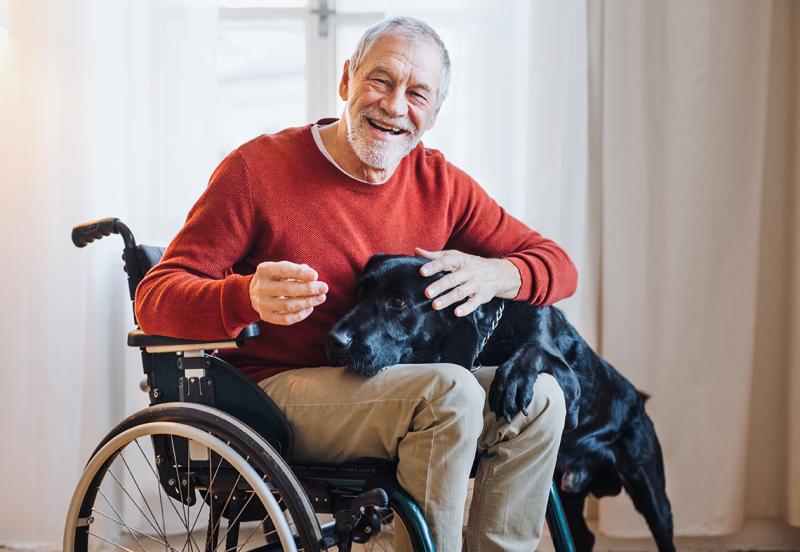Asset Publisher
Caring for Your Older Loved One’s Pet
By Jess Bibbo, PhD | 12/15/2020

An older adult with their dog
When the loved one we are providing care for has a pet, chances are we will provide care for their pet as well. While this can add to the time we spend and amount of tasks we manage as caregivers, it can also provide us opportunities for self-care and a way to begin difficult discussions with a loved one.
Pet care responsibilities
A study of caregivers who provide care for a loved one who owns a pet found that every caregiver who participated in the study played a role in performing pet care tasks for the pet. Caregivers are likely to help with everyday pet care tasks, such as feeding, providing water, walking a dog or cleaning a cat’s litter box. If a loved one is having difficulty managing their own medications, they are probably also having difficulty managing the medications their pets need. Even if the pet is not taking a prescription, there are preventative medications such as those for fleas and ticks, and heartworm preventative for dogs, that need to be given to the pet on a regular basis.
When a loved one has mobility issues, we may also be the one to buy pet supplies for the pet or take the pet to a veterinarian. Most pets need to go for a check-up once a year, and even animals who are kept inside need to be up-to-date on their vaccines. With all of these responsibilities to manage, providing care for a loved one’s pet can be a lot of work.
Pet care as self-care
Results from the same study showed that performing pet care tasks was associated with feelings of satisfaction in the caregiving role for those who had a strong bond with their loved one’s pet. This may be because even taking care of a pet that is not our own can provide us with opportunities to relax, play, exercise, and give and receive affection. Taking a few moments to pet the animal, talk to the bird or gaze into the fish tank can be a chance to breathe and center ourselves in an otherwise hectic schedule. Playing with the pet for five minutes can provide an opening in our day for us to experience happiness and joy. Dog walking is known to be good for us physically and gets us outside on a regular basis. The more time we spend with a loved one’s animal companion, the more of a relationship we can build with the animal. Building a bond with a loved one’s pet can give us another valuable relationship in our life for us to provide and receive affection and love.
Pet care as a method of bringing up difficult subjects
Talking with a loved one about pet care and planning for the future of the pet can be a way to begin conversations about the tough topics related to the current and future planning for a loved one’s medical care and choices. Talking about who should care for the pet if a loved one needs to go into the hospital can start a conversation about medical choices. Discussing where the pet should live if a loved one needs to transition into long-term care can be an opportunity to talk about long-term care preferences and what changes in a loved one’s abilities would necessitate such a transition. A conversation about what should happen to the pet if a loved one dies may allow for a conversation about end-of-life care and what a loved one wants to happen when he or she passes.
A loved one’s pet may add to the amount of time we spend and tasks we manage in our caregiving role, but the pet can also be a way to connect with others, connect with the loved one we care for and connect with ourselves.
Related Assets
Suggested Reads
Caregiving for an Aging Pet Owner
This infographic explores the challenges, benefits, opportunities, and concerns of caregivers caring for pet owners.
Pet Friendly Senior Living: What Questions Should I Ask?
In the United States, just over half of people ages 50 and older live with at least one pet, and studies have shown that companionship was the most common reason for owning a pet. Experiencing this bond with a pet can be a value that shapes an older adult’s ch...
